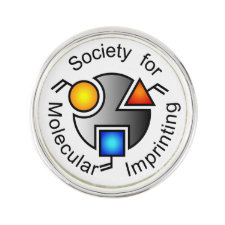
Authors: Erol K, Köse K, Uzun L, Say R, Denizli A
Article Title: Polyethyleneimine assisted-two-step polymerization to develop surface imprinted cryogels for lysozyme purification.
Publication date: 2016
Journal: Colloids and Surfaces B: Biointerfaces
Volume: 146
Page numbers: 567-576.
DOI: 10.1016/j.colsurfb.2016.06.060
Alternative URL: http://www.sciencedirect.com/science/article/pii/S0927776516304908
Abstract: Surface imprinting strategy is one of the promising approaches to synthesize plastic antibodies while overcoming the problems in the protein imprinting research. In this study, we focused our attentions on developing two-step polymerization to imprint on the bare surface employing polyethyleneimine (PEI) assisted-coordination of template molecules, lysozyme. For this aim, we firstly synthesized poly(2-hydroxyethyl methacrylate-glycidyl methacrylate), poly(HEMA-GMA) cryogels as a bare structure. Then, we immobilized PEI onto the cryogels through the addition reaction between GMA and PEI molecules. After that, we determined the amount of free amine (NH2) groups of PEI molecules, subsequently immobilized methacrylate functionalities onto the half of them and another half was used to chelate Cu(II) ions as a mediator between template, lysozyme and PEI groups. After the characterization of the materials developed by Fourier transform infrared spectroscopy (FTIR), scanning electron microscopy (SEM) and the micro-computed tomography (μCT), we optimized the lysozyme adsorption conditions from aqueous solution. Before performing lysozyme purification from chicken egg white, we evaluated the effects of pH, interaction time, the initial lysozyme concentration, temperature and ionic strength on the lysozyme adsorption. Moreover, the selectivity of surface imprinted cryogels was examined against cytochrome c and bovine serum albumin (BSA) as the competitors. Finally, the mathematical modeling, which was applied to describe the adsorption process, showed that the experimental data is very well-fitted to the Langmuir adsorption isotherm
Template and target information: protein, lysozyme
Author keywords: Two-step polymerization, surface imprinting, lysozyme, Cryogel, polyethyleneimine



Join the Society for Molecular Imprinting

New items RSS feed
Sign-up for e-mail updates:
Choose between receiving an occasional newsletter or more frequent e-mail alerts.
Click here to go to the sign-up page.
Is your name elemental or peptidic? Enter your name and find out by clicking either of the buttons below!
Other products you may like:
 MIPdatabase
MIPdatabase









